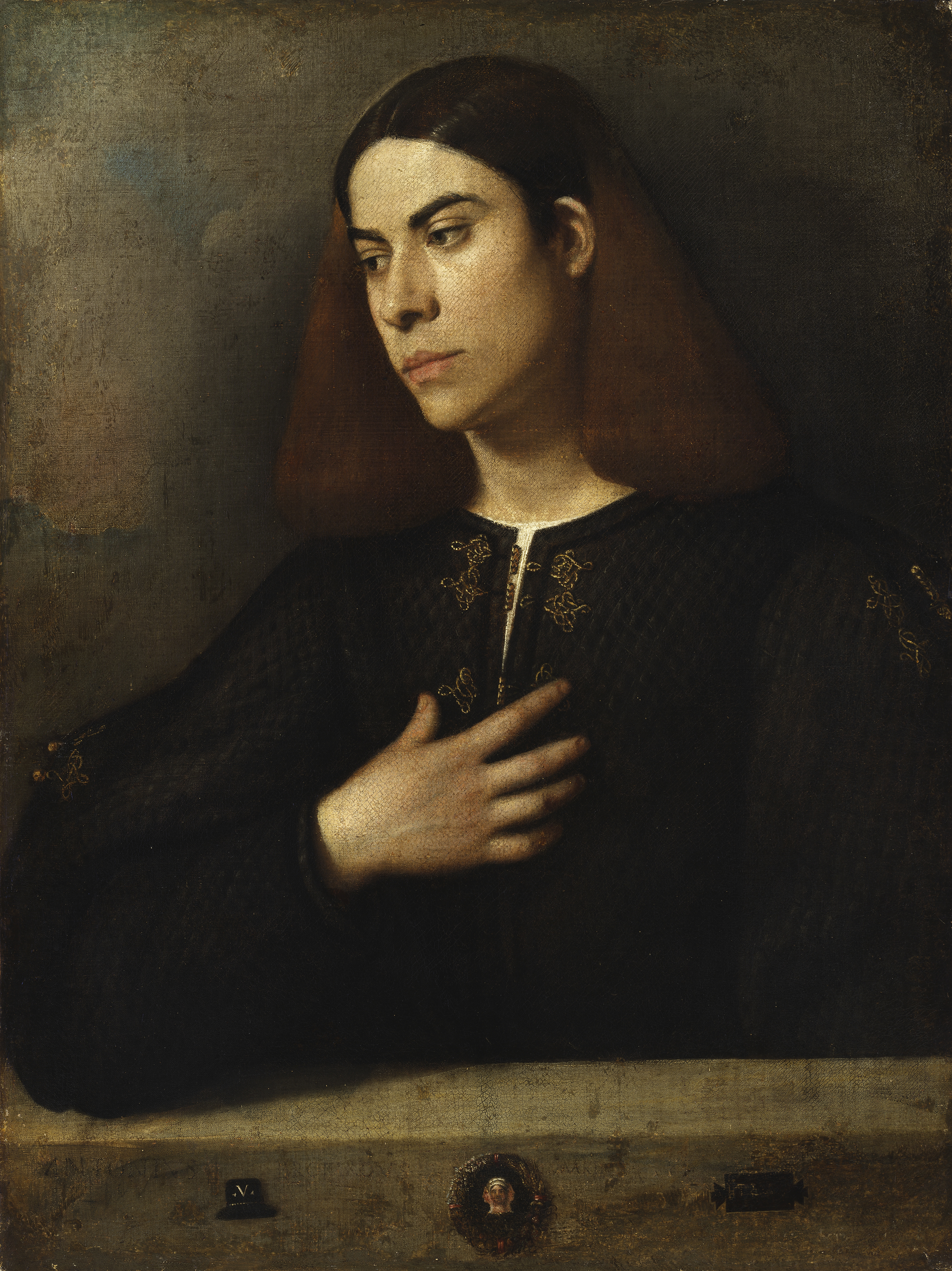From 31ST March 2022 the Gallerie dell'Accademia di Venezia hosts a masterpiece of Giorgione called Portrait of a Youth of 1503, coming from Budapest Museum of Fine Arts.

Giorgione, Ritratto di giovane (Il ritratto ‘Brocardo’), 1503 circa, Museo di Belle Arti, Budapest, inv. 94
Giorgione da Castelfranco, called Giorgione
(Castelfranco Veneto, ca. 1473/1474 – Venice, 1510)
Portrait of a Youth
ca. 1503
Budapest, Museum of Fine Arts (Szépművészeti Múzeum), inv. 94
We are presenting here a portrait of the highest quality and unquestionable charm, recognised by the majority of critics as an autograph work by Giorgione, even if its chronological placement in the artist’s career is controversial. Today its date is at the centre of further debate due to a documentary discovery that anticipates the artist’s date of birth by a few years (around 1473/1474). The painting depicts a young man in the act of bringing his hand to his chest: a gesture which, apart from opening the clasps of his robe, shows, together with the pensive and melancholic expression of his face, an attitude of concentrated introspection.
The Hungarian painting is closely related to the Vecchia (Portrait of an Old Woman) in terms of both composition and style. Some critics (Dal Pozzolo, 2009) have also put forward the hypothesis that it was originally “the cover … painted with [the image of] a man wearing a black leather garment” that accompanied the Vecchia, as indicated in the Vendramin family inventory of 1601.
X-radiography (Kákay Szabó, 1954) has revealed that the young man was looking upwards in the first draft of the composition, toward the light coming from a window in the back wall on the left, opening onto a landscape in the distance. The landscape was later overpainted to suggest an enclosed space (although the sky and mountains can still be made out) and the gaze of the sitter was lowered. The enticing proposal to interpret the portrait as an examplar of contemplation and Neoplatonic ascent (Ballarin, 1979) is well suited to the character’s introspective experience, and is reinforced by the cold, silvery tone of the light that takes on an abstract, ideal quality. The luminosity of the sitter’s complexion is accentuated by the compact mass of his dark hair, characterised by its unusual, two-tone colour, which has suggested to some that the young man wears a hairnet, or that the side parts of his hair were dyed a lighter colour in accordance with the (mostly female) fashion of the time.
The enigmatic nature of the portrait is heightened by the emblems depicted on the parapet: a black top hat inscribed with a V, a three-headed female bust alluding to the virtue of Prudence, encircled by a garland, and a plaque with traces of letters that are no longer legible. If we accept the interpretation of the painting in terms of Neoplatonic spirituality, the presence of an image alluding to Prudence seems very appropriate, as it was, according to Marsilio Ficino, the only one of the four moral virtues that could lead to Beatitude. The other elements are difficult to interpret and probably allude to the identity of the sitter, who in the past was erroneously recognised as the poet and jurist Antonio Brocardo on the basis of an apocryphal inscription written on the parapet.
Text by Dr. Roberta Battaglia, Curator of Fifteenth- and Sixteenth-Century Paintings at the Gallerie dell’Accademia.